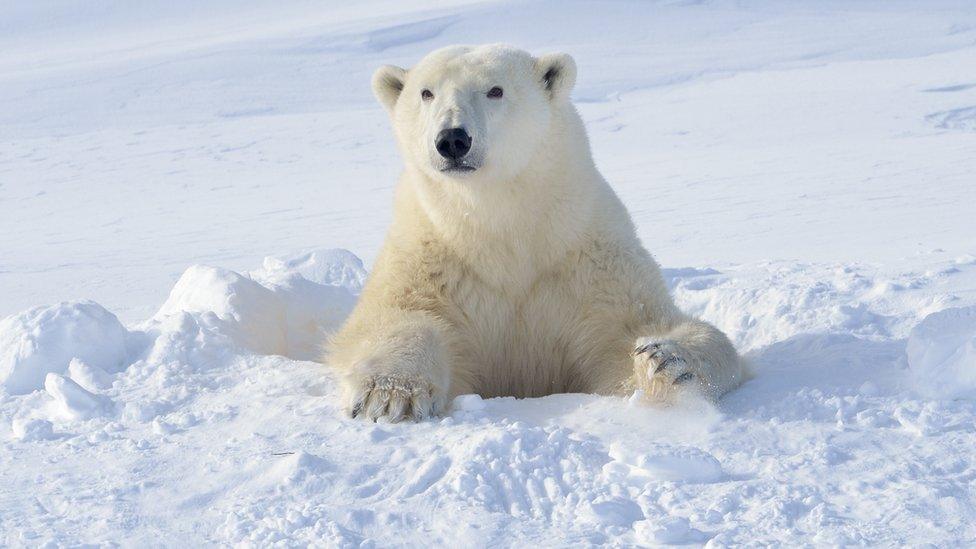Polar Bears: Is climate change putting them risk of Arctic extinction?
- Published

If climate change carries on at its current rate, there will be "few" polar bears left by 2100.
Dr. Steven Amstrup, from Polar Bear international said his study, "found that moderate emissions reductions" would help polar bear numbers, but would be unlikely to prevent extinction in the Arctic.
The scientists who've made these predictions say it's good to know because it can help people plan and take action to improve polar bear survival - and allow more of them to be around for longer.
Polar bears live on ice sheets and need this sea ice to catch their seal prey. Sea ice that stays in the Arctic for longer than a year has been declining at a rate of about 13% per decade since satellite records began in the late 1970s.
Climate change is causing ice sheets to melt at an increased rate so the bears are forced on to land or other areas to find food, which is harder.
If the females don't get enough food they aren't able to make enough milk for their cubs which means fewer will make it to adulthood and overall numbers will drop.
"We know that floods, droughts, and wildfires will become more frequent and severe as the world continues to warm, but timelines for such events are hard to predict," said Dr. Amstrup.
He also said that showing the threats for polar bear populations is "...another reminder that we must act now to head off the worst of future problems faced by us all".
He said the way things are going the future does not look good for polar bears but that "if society gets its act together, we have time to save polar bears. And if we do, we will benefit the rest of life on Earth, including ourselves."
- Published28 September 2019
- Published2 January 2020
- Published14 April 2020
- Published8 June 2022
- Published12 February 2019
